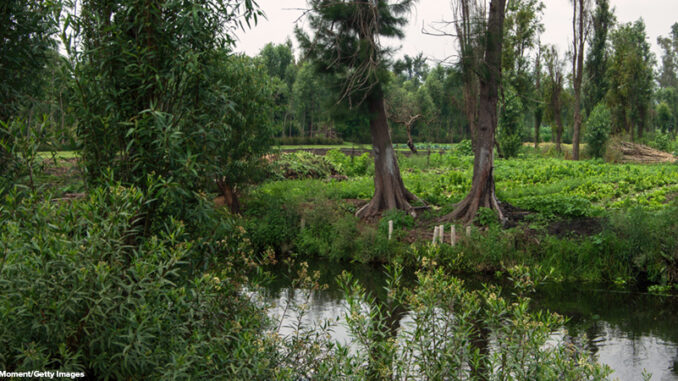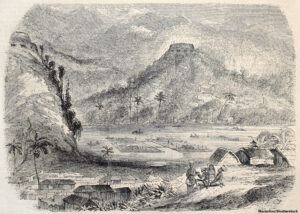
Have you ever heard of Tenochtitlan? It was once the capital of the ancient Aztec empire in what is today Mexico City, Mexico. Tenochtitlan was built on lakes. Today, only a small remnant of the original city remains in floating island farms known as chinampas. Long ago, these human-made farms supplied food to Tenochtitlan. Today, a group of local women are working hard to preserve them. Here, btw takes a closer look at this fascinating, sustainable ancient farming practice.
“Floating Gardens”
Also called “floating gardens,” chinampas were island farms built by the Aztec thousands of years ago. Chinampas were created with mud pulled from the bottom of the lakes that once surrounded the area. The mud was held together by ahuejotes–a type of tall, thin willow tree–planted around the perimeter.
The island farms are largely self-sustaining. The mud they are built with provides fertilizer: it contains mineral-rich ash from the area’s volcanoes. The gardens are nourished by water from the lake, and don’t require chemicals or irrigation. All of this helps make them one of the most productive agricultural systems on Earth; chinampas can have up to eight crop rotations per year. (Most other farming areas can have only two or three.) Crops grown on chinampas include corn, greens, pumpkin, chamomile, celery, broccoli, eggplant, native species of flowers, and more.
Chinampas provide many other ecological benefits as well. They reduce flooding during the rainy season. They are a natural carbon dioxide filter. They also provide habitats for hundreds of native species, and they lower the surrounding air temperature by up to 2 degrees Celsius.
A Growing Threat
Despite these many benefits and their ancient roots, chinampas are facing many serious threats. One of the greatest of these is urban sprawl from Mexico City. Sewage runoff and garbage from the millions living in the city today can clog the canals between the chinampas. The water levels in the canals are also dropping, and the water is often polluted.

Another major problem is that more chinampas are no longer used for farming and have been converted to soccer fields instead. (This yields more money for farmers with much less labor.) Other farmers have added food and kayaking to their chinampas, to cater to the growing tourist population. The soccer fields are particularly detrimental because of the amount of chemicals that are required to maintain them, such as insecticides and fertilizers. These chemicals drain into the canals and damage the local ecosystem.
Women Join the Fight
To protect the chinampas, the National Autonomous University of Mexico has started a growing partnership called the Chinampa Refuge. As part of the program, the University awards farmers the “Etiqueta Chinampera” label for sustainable and traditional farming practices. Such practices include using mud as fertilizer instead of chemicals. This label allows farmers to sell their produce at a higher price. So far, sixteen farmers have received the designation; four of them are women.
Historically, women haven’t been able to inherit chinampas. Even today in Mexico, it’s thought that only men are strong enough to farm them. But women have responded by buying chinampas to preserve them in the face of growing urban development and mass tourism. These farmers, or chinamperas, believe in maintaining these sustainable growing practices to pass on to future generations.
